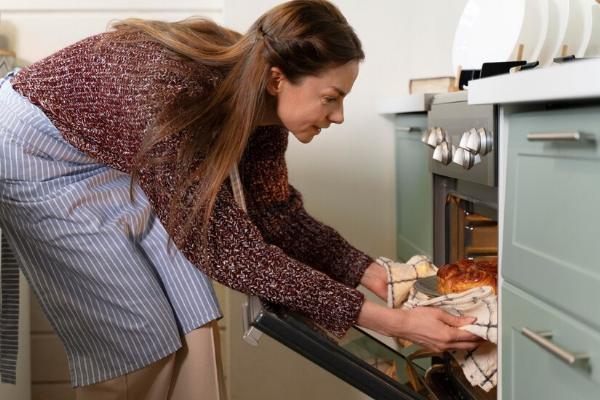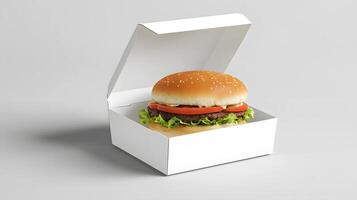Reheating Food in the Microwave Safely and Effectively

Strong 8k brings an ultra-HD IPTV experience to your living room and your pocket.
In recent fast-revolving times, heating food in the microwave is not only making our lifestyle easy but also helping us adjust to this world beyond our imagination. This invention of the microwave put people's lives at ease earlier, and they had stoves that used to take longer and constantly watch over while the food was on it.
However, many people wonder if it's safe to reheat food in the microwave. This blog will explore the safety aspects of using a microwave to reheat food, providing you with valuable insights, practical tips, and relevant examples. We aim to ensure you enjoy the benefits of this modern kitchen appliance without compromising your health.
The Science Behind Microwaving Food
Microwaves work by emitting waves that cause water molecules in food to vibrate, generating heat. This process cooks or warms the food quickly. But it also raises questions about nutrient loss, uneven heating, and potential health risks.
How Microwaves Heat Food
Unlike traditional ovens, microwaves penetrate food from the outside in, causing water molecules to vibrate and produce heat. This method can lead to hot spots and uneven cooking if not properly managed.
Impact on Nutrients
Some believe microwaving food destroys its nutritional value. Research shows that while some nutrients may be lost during microwaving, the impact is similar to other cooking methods. In fact, microwaving can preserve more nutrients compared to boiling or frying.
Safety Concerns
Concerns about microwave safety often stem from misunderstandings. Proper usage, including using microwave-safe containers and following manufacturer guidelines, minimises risks.
Common Myths About Microwaving Food
Several myths surround the use of microwaves. Let's debunk some of the most common misconceptions.
Myth 1: Microwaves Cause Cancer
This myth persists despite scientific evidence disproving it. Microwaves use non-ionizing radiation, which doesn't have enough energy to break chemical bonds or damage DNA.
Myth 2: Microwaving Food in Plastic is Dangerous
While certain plastics can release harmful chemicals when heated, using microwave-safe containers eliminates this risk. Always check labels to ensure safety.
Myth 3: Microwaves Make Food Radioactive
Microwaves cook food using electromagnetic waves, not radioactive materials. Once the microwave stops, no residual radiation remains in the food. Also, learn to Microwave prawns reheating.
Best Practices for Reheating Food in the Microwave
To safely and effectively reheat food in the microwave, follow these best practices.
Use Microwave-Safe Containers
Choose containers labeled as microwave-safe. Glass, ceramic, and certain plastics are suitable.
Avoid using metal or containers with metallic accents.
Stir and Rotate Food
Microwave ovens can heat food unevenly. Stirring and rotating the food during reheating helps distribute heat more evenly, reducing the risk of hot spots and ensuring thorough cooking.
Cover Your Food
Covering your food with a microwave-safe lid or microwave-safe plastic wrap helps retain moisture and prevent splatters. This ensures your food heats evenly and stays moist.
Reheating Different Types of Food
Different foods respond differently to microwaving. Here's how to handle various types of food safely and effectively.
Reheating Soups and Stews
Soups and stews reheat well in the microwave. Use a microwave-safe container, cover it, and stir halfway through heating to ensure even warming.
Reheating Leftover Pasta
Pasta can dry out in the microwave. Add a splash of water or sauce before reheating, cover the dish, and stir halfway through to keep it moist.
Reheating Meats and Proteins
Meats can become tough when microwaved. Use lower power settings and add a small amount of broth or sauce to retain moisture. Cover and rotate the meat during reheating.
The Importance of Even Heating
Even heating is crucial to ensure food safety and prevent foodborne illnesses.
Risks of Uneven Heating
Uneven heating can leave cold spots where bacteria can survive. This increases the risk of foodborne illnesses. Ensuring your food is heated evenly minimises this risk.
Techniques to Ensure Even Heating
Use shallow, microwave-safe containers for more uniform heating. Stirring and rotating food, as mentioned earlier, also contribute to even heating.
Checking Food Temperature
Use a food thermometer to check if reheated food reaches an internal temperature of 165°F (74°C). This temperature ensures harmful bacteria are killed.
Microwave-Safe Containers and Materials
Choosing the right containers is essential for safe microwaving.
Suitable Materials
Microwave-safe glass, ceramics, and plastics are ideal. Look for containers labeled as microwave-safe. Avoid using metal or containers with metallic trims.
What to Avoid
Avoid using containers that are not labelled as microwave-safe. These may release harmful chemicals or become damaged when heated.
Using Plastic Wrap and Paper Towels
Plastic wrap and paper towels can be used in the microwave, but ensure they are microwave-safe. Avoid letting plastic wrap touch the food directly.
Environmental Impact of Microwaving
Using a microwave can be energy-efficient compared to other cooking methods.
Energy Efficiency
Microwaves use less energy than conventional ovens and stovetops, making them an environmentally friendly option for reheating food.
Reducing Food Waste
Microwaving leftovers helps reduce food waste by allowing you to enjoy meals multiple times, contributing to a more sustainable lifestyle.
Eco-Friendly Microwave Practices
Be mindful of using microwave-safe containers that are reusable and avoid single-use plastics.
Understanding Microwave Wattage
Microwave wattage affects cooking and reheating times.
Finding Your Microwave's Wattage
Check your microwave's user manual or the label inside the door to find its wattage. Higher-wattage microwaves cook food faster.
Conclusion
Reheating food in the microwave is safe and convenient when done correctly. By following best practices, using microwave-safe containers, and ensuring even heating, you can enjoy delicious and safe meals every time. Remember, the microwave is a tool that, when used wisely, can enhance your kitchen experience.
Note: IndiBlogHub features both user-submitted and editorial content. We do not verify third-party contributions. Read our Disclaimer and Privacy Policyfor details.







